Related Research Articles

The Curtiss Robin, introduced in 1928, was a high-wing monoplane built by the Curtiss-Robertson Airplane Manufacturing Company. The J-1 version was flown by Wrongway Corrigan who crossed the Atlantic after being refused permission.
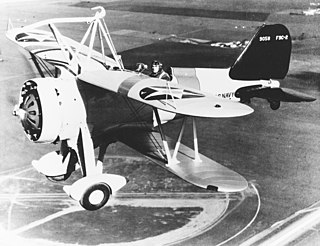
The Curtiss F9C Sparrowhawk is a light 1930s biplane fighter aircraft that was carried by the United States Navy airships USS Akron and Macon. It is an example of a parasite fighter, a small airplane designed to be deployed from a larger aircraft such as an airship or bomber.

The Naval Aircraft Factory TS-1 was an early biplane fighter aircraft of the United States Navy, serving from 1922 to 1929.

The Cunningham-Hall Model PT-6 was an American six-seat cabin biplane aircraft of the late 1920s and was the first design of the Cunningham-Hall Aircraft Corporation of Rochester, New York.

The Curtiss Model 54 Tanager was an aircraft constructed in 1929 as Curtiss' entry in the Guggenheim Safe Aircraft Competition.
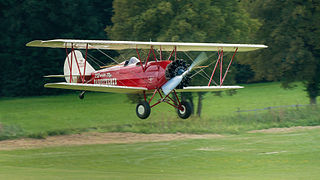
The Travel Air 2000/3000/4000 (originally, the Model A, Model B and Model BH were open-cockpit biplane aircraft produced in the United States in the late 1920s by the Travel Air Manufacturing Company. During the period from 1924–1929, Travel Air produced more aircraft than any other American manufacturer, including over 1,000 biplanes. While an exact number is almost impossible to ascertain due to the number of conversions and rebuilds, some estimates for Travel Air as a whole range from 1,200 to nearly 2,000 aircraft.

The Keystone LB-6 and LB-7 were 1920s American light bombers, built by the Keystone Aircraft company for the United States Army Air Corps, called Panther by the company, but adoption of the name was rejected by the U.S. Army.

The International F-17 Sportsman was a 1920s American three-seat open-cockpit biplane designed and manufactured by the International Aircraft Corporation in Long Beach, California and Cincinnati, Ohio. 107 aircraft were built, 77 of them at Cincinnati.

Elinor Smith was a pioneering American aviator, once known as "The Flying Flapper of Freeport". She was the first woman test pilot for both Fairchild and Bellanca. She was the youngest licensed pilot in the world at age 16.
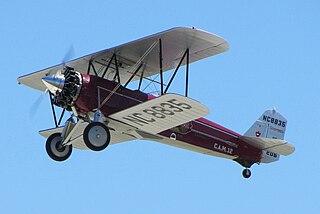
The Stearman C3 was an American-built civil biplane aircraft of the 1920s, designed by Stearman Aircraft of Wichita, Kansas. It was also the first Stearman aircraft to receive a type certificate.

The American Eagle A-129 was a 1920s biplane built in the U.S.A.
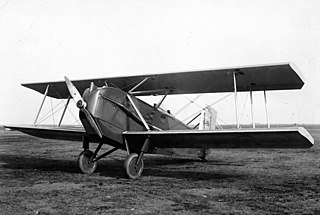
The Curtiss Carrier Pigeon was an American mail plane of the 1920s. A single-engined biplane designed and built to replace World War I surplus aircraft such as the DH-4, the Carrier Pigeon was one of the first aircraft designed specifically for U.S. Airmail service.

The Curtiss Model 41 Lark was a commercial biplane manufactured by Curtiss Aeroplane and Motor Company that was used by pioneering airmail, airline and bush pilots in the 1920s.

The Aeromarine AM-1 was a biplane built to pursue a US Air Mail Service requirement for a nighttime transport.

The Paramount Cabinaire was a 1920s designed cabin biplane, designed by Walter J. Carr and produced by the Paramount Aircraft Corporation. Only eight were completed before production ceased.

The Curtiss CA-1 was an American five-seat biplane amphibian designed by Frank Courtney and built by Curtiss-Wright at St Louis, Missouri.

The Curtiss/Curtiss-Robertson Model 56 Thrush was a 1929 six passenger high-wing fixed undercarriage single-engine cabin monoplane airliner and utility transport powered by either a Curtiss Challenger or a Wright Whirlwind radial engine and built as an enlargement of the earlier Curtiss Robin. Several were used for record breaking endurance flights by female pilots during the early 1930s including one in which the aircraft stayed aloft for almost ten days.
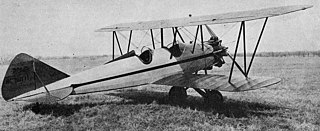
The Rearwin Ken-Royce was an American three-seat sport/touring biplane built by Rearwin Airplanes first in Salina, Kansas then Kansas City. It was the first airplane built by the company.
The Simplex Red Arrow was a US single-engined monoplane produced in the late 1920s and early 1930s and intended as club machine or mail transport. Most used radial engines in the 90–110 hp (67–82 kW) range. They carried one or two passengers whose seats could be open or enclosed. One variant, the Red Arrow Dual Plane, was easily converted from monoplane to biplane and was available with two versions of the much more powerful Wright Whirlwind engines. In all about 20 were built.

The Ireland Neptune was a four or five place pusher configuration biplane sold in flying boat and amphibian versions. Designed in the U.S. and first flown in 1927, well over 50 were built.
References
- ↑ Kenneth Munson. U.S. commercial aircraft .
- ↑ Charles R. Mitchell, Kirk W. House. Flying High: Pioneer Women in American Aviation.
- ↑ Skyways. July 1999.
{{cite journal}}: Missing or empty|title=(help) - ↑ "Bobbie Trout". Archived from the original on 24 January 2010. Retrieved 29 October 2011.
- ↑ Donna Veca, Skip Mazzio. Just plane crazy: biography of Bobbi Trout.